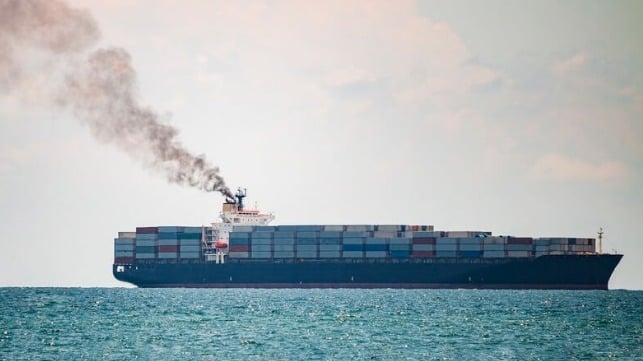Benchmarking on Decarbonization Finds Progress and Areas for Improvement

The Getting to Zero Coalition, a non-profit focusing on decarbonization of the maritime industry, released its first benchmarking as a tool to assess and document the collective actions of members. While saying its goal is to increase transparency, promote collective accountability, and inspire actions, it shows that the industry has just begun to address the challenges that lie ahead.
Formed in 2019, the group today has over 200 members, including leaders across the industry, governments, and non-governmental agencies. It received 76 responses from companies and used that to formulate its benchmark. It believes some clear trends have already begun to emerge in the first year’s data and that the value of the benchmark expands over time.
“A general picture emerges of a Coalition that is grappling with many of the same challenges faced by the wider sector,” they write in the conclusions to the report. They identified a total of 26 actions and measured progress in broad areas ranging from creating enabling conditions to incentives in areas from finance to policy and operations, efforts by first moves, transitional investments, and the deployment of zero-emission shipping.
Among the key challenges that they found are shared across the industry is a lack of clarity around the IMO’s forthcoming mid-term measures and how they will impact the business case for investments. It also points to uncertainty about the relative competitiveness of various fuel pathways and the challenges of connecting future supply and demand for zero-emission fuels and shipping services.
They found that members are “stepping up” by promoting enabling conditions. They highlighted efforts at target-setting, advocacy for strong decarbonization policies, and improving emissions' transparency. The report concludes that “members are embracing their roles as leaders in the sector.”
It, however, finds that “progress remains weak” in efforts such as green premium-based offerings and green shipping corridors. They note these efforts are designed to overcome policy and economic uncertainties by supporting strategic commitments and providing risk and cost-sharing. Yet, while companies are involved in these efforts, they find that activities “remain at an exploratory level, and more needs to be done to deliver on the promise of these first-mover efforts.”
Among the five broad categories, it finds the most progress with creating enabling conditions (58 percent) followed by incentives and market-making (42 percent). First move efforts, mostly limited to demonstration projects and infrastructure efforts, transitional investments, and deployment of zero-emission shipping, each score between 23 and 26 percent.
It ranks the strongest progress with elements such as reporting and transparency, as well as pilot projects. Efforts such as zero-emission refits and commercializing zero-emission shipping services gained the lowest scores, under 10 percent.
It calls for the industry to focus on long-term transition planning for 2035 and beyond and to leverage best practices through knowledge sharing. It also recommends exploring and participating in innovative commercial arrangements to spread the costs and risks of the transition.
Governments are encouraged to strengthen international regulations by adopting predictable and reliable measures. They also call for implementing national incentives and infrastructure investments and highlight the need to develop national hydrogen strategies.
The Getting to Zero Coalition released the 2025 report online. It highlights that a clearer picture will emerge as year-on-year data becomes available, but says it can be a key tool to shape policy and incentivize the industry and policymakers.
